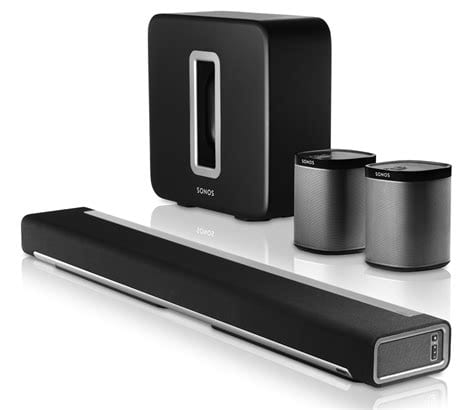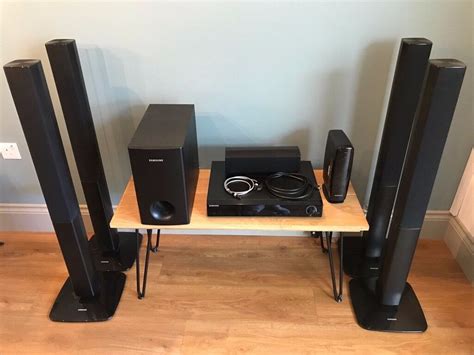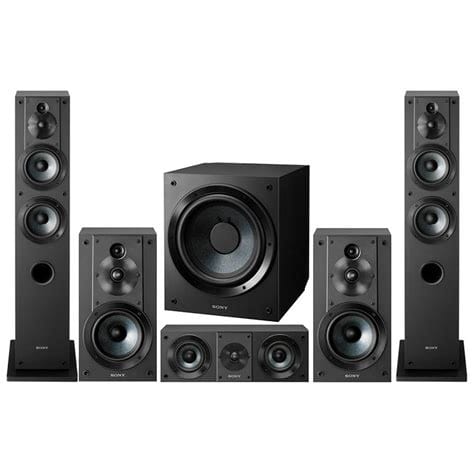Introduction to Surround Sound
Surround sound is an audio technology that enhances the listening experience by creating a more immersive and realistic soundscape. Unlike traditional stereo systems, which only have two channels (left and right), surround sound systems use multiple speakers strategically placed around the listener to create a three-dimensional audio environment. This article will guide you through the process of setting up a 10.2 surround sound system, from choosing the right components to fine-tuning your setup for optimal performance.
Understanding the 10.2 Surround Sound Configuration
A 10.2 surround sound system consists of ten speakers and two subwoofers, providing an incredibly detailed and immersive audio experience. The speaker configuration is as follows:
| Speaker Position | Quantity |
|---|---|
| Front Left and Right | 2 |
| Center | 1 |
| Surround Left and Right | 2 |
| Surround Back Left and Right | 2 |
| Front Height Left and Right | 2 |
| Top Middle Left and Right | 2 |
| Subwoofers | 2 |
Front Speakers
The front left, center, and right speakers are responsible for reproducing the majority of the audio content, including dialogue, music, and sound effects. These speakers should be placed at ear level and angled towards the listening position.
Surround Speakers
The surround left and right speakers are positioned to the sides of the listening area, slightly above ear level. These speakers enhance the sense of spaciousness and provide directional audio cues.
Surround Back Speakers
The surround back left and right speakers are placed behind the listening position, creating a sense of depth and immersion. They are essential for accurately reproducing sound effects and ambiance in movies and games.
Height Speakers
The front height and top middle speakers add a vertical dimension to the soundstage, creating a more realistic and immersive experience. Front height speakers are placed above the front left and right speakers, while top middle speakers are mounted on or near the ceiling, directly above the listening position.
Subwoofers
The two subwoofers in a 10.2 system are responsible for reproducing low-frequency effects (LFE) and bass content. Subwoofers can be placed almost anywhere in the room, as low-frequency sounds are less directional than higher frequencies. However, it’s essential to avoid placing them in corners or too close to walls, as this can result in uneven bass response.

Choosing the Right Components
AV Receiver
The heart of any surround sound system is the AV receiver. When selecting an AV receiver for a 10.2 setup, ensure that it supports the necessary audio formats (such as Dolby Atmos and DTS:X) and has enough amplifier channels to power all your speakers. Look for a receiver with room calibration features, as this will help optimize the sound for your specific listening environment.
Speakers
Investing in high-quality speakers is crucial for achieving the best possible sound. When choosing speakers for your 10.2 system, consider factors such as power handling, sensitivity, and frequency response. Ensure that the speakers are well-matched in terms of tonal balance and timbre to create a cohesive soundstage.
Subwoofers
Subwoofers play a critical role in reproducing low-frequency effects and providing a solid foundation for the rest of the audio content. When selecting subwoofers for your 10.2 system, look for models with ample power, low distortion, and a wide frequency response. Sealed subwoofers generally offer tighter, more accurate bass, while ported subwoofers can provide more output and deeper extension.

Room Acoustics and Speaker Placement
Room Acoustics
The acoustics of your listening room can significantly impact the performance of your surround sound system. Hard, reflective surfaces (such as glass or concrete) can create unwanted reflections and echoes, while soft, absorptive materials (like carpets and curtains) can help dampen these effects. Consider adding acoustic treatments, such as absorption panels and diffusers, to optimize the sound quality in your room.
Speaker Placement
Proper speaker placement is essential for achieving the best possible surround sound experience. Follow these guidelines when setting up your 10.2 system:
- Place the front left and right speakers an equal distance from the listening position, forming an equilateral triangle.
- Position the center speaker directly above or below the screen, aligned with the front left and right speakers.
- Place the surround left and right speakers to the sides of the listening area, slightly above ear level and aimed towards the listener.
- Position the surround back left and right speakers behind the listening area, also slightly above ear level and angled towards the listener.
- Mount the front height speakers above the front left and right speakers, angled down towards the listening position.
- Install the top middle speakers on or near the ceiling, directly above the listening position.
- Experiment with subwoofer placement to achieve the most even bass response throughout the room.

Calibrating Your 10.2 Surround Sound System
Once you have positioned your speakers and subwoofers, it’s time to calibrate your system for optimal performance. Many AV receivers include built-in room calibration software, such as Audyssey MultEQ or Yamaha YPAO. These systems use a microphone to measure the acoustic properties of your room and adjust the speaker levels, distances, and equalization accordingly.
If your receiver doesn’t have built-in calibration software, you can use a sound level meter to manually adjust the speaker levels. Play a test tone through each speaker and adjust the levels until they are all outputting the same volume at the listening position.
Enjoying Your 10.2 Surround Sound System
With your 10.2 surround sound system set up and calibrated, it’s time to enjoy the immersive audio experience. Here are some tips for getting the most out of your system:
- Choose content that is specifically mixed for surround sound, such as movies with Dolby Atmos or DTS:X soundtracks.
- Experiment with different listening modes on your AV receiver to find the one that best suits your content and personal preferences.
- Regularly check your speaker connections and calibration settings to ensure optimal performance.
- Consider upgrading your audio sources, such as using a high-quality Blu-ray player or streaming device, to take full advantage of your surround sound system.
FAQ
-
Q: Can I use my existing speakers in a 10.2 surround sound setup?
A: It depends on the specifications and compatibility of your existing speakers. Ensure that they have the necessary power handling and frequency response to work well in a 10.2 configuration. If in doubt, consult with a home theater professional. -
Q: Do I need to purchase a specific type of speaker wire for my 10.2 system?
A: No, you can use any high-quality speaker wire with the appropriate gauge for your speakers and amplifier. Typically, 16-gauge wire is sufficient for most home theater applications. -
Q: Can I add more speakers to a 10.2 surround sound system?
A: While it is possible to add more speakers, a 10.2 system is already a highly advanced and immersive setup. Adding more speakers may not necessarily improve the audio experience and could even degrade the sound quality if not properly implemented. -
Q: How do I know if my room is suitable for a 10.2 surround sound system?
A: A 10.2 system is best suited for larger rooms with ample space for speaker placement. Consider the size and layout of your room, as well as the availability of suitable mounting points for the height and overhead speakers. If your room is too small or acoustically challenging, a simpler surround sound configuration may be more appropriate. -
Q: Can I use a 10.2 surround sound system for music listening as well?
A: Yes, a well-configured 10.2 system can provide an excellent music listening experience, particularly with multi-channel music formats like Dolby Atmos Music or DTS:X. However, keep in mind that most music is still mixed in stereo, so you may not always take full advantage of the additional speakers in your setup.
Conclusion
Setting up a 10.2 surround sound system can be a complex and time-consuming process, but the end result is an incredibly immersive and realistic audio experience. By carefully selecting your components, optimizing your room acoustics, and properly positioning your speakers, you can create a home theater setup that rivals the best commercial cinemas. With a little patience and attention to detail, you’ll be enjoying the ultimate in surround sound in no time.

No responses yet